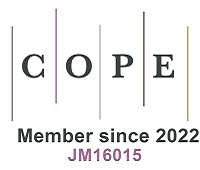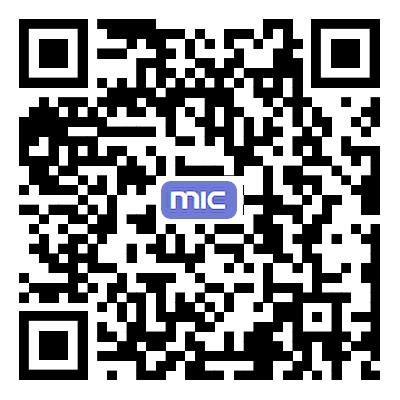REFERENCES
2. Leisegang S, Ross R R. Versuch mit einer kuehlbaren objektpatrone. In: Ross R, editors. Proceedings of the third international congress on electron microscopy. Royal Society London; 1954. pp. 184-88. Available from:https://scholar.google.com/scholar?hl=zh-CN&as_sdt=0%2C5&q=Leisegang+S.+Versuch+mit+einer+Kuehlbaren+Objektpatrone.+In%3A+Ross+R%2C+editors.+The+third+International+Congress+on+Electron+Microscopy%3A+Proceedings+of+the+Third+International+Congress+on+Electron+Microscopy%3B+1954&btnG= [Last accessed on 8 Oct 2024].
3. Whelan MJ. A high temperature stage for the Elmiskop I. In: Bargmann W, Möllenstedt G, Niehrs H, Peters D, Ruska E, Wolpers C, editors. Verhandlungen. Berlin: Springer Berlin Heidelberg; 1960. p. 96-100.
4. Butler EP. In situ experiments in the transmission electron microscope. Rep Prog Phys 1979;42:833-95.
5. Martin CJ, Boyd JD. A method for calibrating a specimen-heating stage in the electron microscope. J Phys E: Sci Instrum 1973;6:21-2.
6. Clark JB. High-temperature, high-resolution metallography. Metallurgical society conference 1965,38:347. Available from: https://cir.nii.ac.jp/crid/1570291224290647040 [Last accessed on 8 Oct 2024].
7. Jouffrey B, Favard P. Microscopie électronique à haute tension 1975: textes des communications présentées au 4e congrès international, toulouse, 1-4 september 1975. Societe Francaise de Microscopie Electronique; 1976. p. 345. Available from:https://scholar.google.com/scholar?hl=zh-CN&as_sdt=0%2C5&q=Jouffrey+B%2C+Favard+P.+Microscopie+%C3%89lectronique+%C3%80+Haute+Tension+1975%3A+Textes+Des+Communications+Pr%C3%A9sent%C3%A9es+Au+4e+Congr%C3%A8s+International%2C+Toulouse%2C+1-4+September+1975.+Societe+Francaise+de+Microscopie+Electronique%3B+1976.+pp.+345&btnG= [Last accessed on 8 Oct 2024].
8. Swann PR, Humphreys CJ, Goringe MJ. High voltage electron microscopy. In:Peter Roland Swann, editors. Blackwell Scientific Publications; 1973. p.365. Available from: https://web.cecs.pdx.edu/~cgshirl/Glenns%20Publications/02%201974%20Critical%20Voltage%20Effect%20and%20Applications%20Thomas%20Shirley%20Lally%20Fisher.pdf [Last accessed on 8 Oct 2024].
9. Tejada A, den Dekker AJ. A comparison between minimum variance control and other online compensation methods for specimen drift in transmission electron microscopy. Multidim Syst Sign Process 2014;25:247-71.
10. Baker R, Feates F, Harris P. Continuous electron microscopic observation of carbonaceous deposits formed on graphite and silica surfaces. Carbon 1972;10:93-6.
11. Baker R. Nucleation and growth of carbon deposits from the nickel catalyzed decomposition of acetylene. Journal of Catalysis 1972;26:51-62.
12. Baker RTK, Harris PS. Controlled atmosphere electron microscopy. J Phys E: Sci Instrum 1972;5:793-7.
13. Fujita H, Komatsu M, Ishikawa I. A universal environmental cell for a 3MV-class electron microscope and its applications to metallurgical subjects. Jpn J Appl Phys 1976;15:2221-8.
14. Hashimoto H, Naiki T, Eto T, Fujiwara K. High temperature gas reaction specimen chamber for an electron microscope. Jpn J Appl Phys 1968;7:946.
15. Hiziya K, Hashimoto H, Watanabe M, Mihama K. Gas reaction on the specimen. In: Bargmann W, Möllenstedt G, Niehrs H, Peters D, Ruska E, Wolpers C, editors. Verhandlungen physikalisch-technischer teil. Berlin: Springer Berlin, Heidelberg; 1960. pp. 80-2.
16. Hashimoto H, Kumao A, Eto T, Fujiwara K. Drops of oxides on tungsten oxide needles and nuclei of dendritic crystals. Journal of Crystal Growth 1970;7:113-6.
17. Venables JA, Ball DJ, Thomas GJ. An electron microscope liquid helium stage for use with accessories. J Sci Instrum 1968;1:121-6.
18. Bostanjoglo O, Lischke B. Elektronenmikroskopische untersuchungen am kondensierten wasserstoff, stickstoff und sauerstoff. Zeitschrift für Naturforschung A 1967;22:1620-2.
19. Honjo G, Kitamura N, Shimaoka K, Mihama K. Low temperature specimen method for electron diffraction and electron microscopy. J Phys Soc Jpn 1956;11:527-36.
20. Venables JA. Liquid helium cooled tilting stage for an electron microscope. Review of Scientific Instruments 1963;34:582-3.
21. Piercy GR, Gilbert RW, Howe LM. A liquid helium cooled finger for the Siemens electron microscope. J Sci Instrum 1963;40:487-9.
22. Goringe MJ, Valdrè U. Use of the bright field shadow technique to study superconductivity in the electron microscope. Philosophical Magazine 1963;8:1999-2003.
23. Boersch H, Bostanjoglo O, Niedrig H. Temperaturabhängigkeit der transparenz dünner schichten für schnelle elektronen. Z Physik 1964;180:407-14.
24. Boersch H, Niedrig H, Yersin H. Temperature dependence of large angle electron scattering at polycrystalline gold foils. Physics Letters A 1967;25:195-6.
25. Watanabe H, Ishikawa I. A liquid helium cooled stage for an electron microscope. Jpn J Appl Phys 1967;6:83.
26. Heide HG, Urban K. A novel specimen stage permitting high-resolution electron microscopy at low temperatures. J Phys E: Sci Instrum 1972;5:803-8.
27. Chlebek HG, Curzon AE. A liquid helium stage for the Philips EM 300 electron microscope. J Phys E: Sci Instrum 1973;6:1105-6.
28. Nogales E. The development of cryo-EM into a mainstream structural biology technique. Nat Methods 2016;13:24-7.
29. Fernández-Morán H. Low-temperature preparation techniques for electron microscopy of biological specimens based on rapid freezing with liquid helium II. Ann N Y Acad Sci 1960;85:689-713.
30. Taylor KA, Glaeser RM. Electron diffraction of frozen, hydrated protein crystals. Science 1974;186:1036-7.
31. Chiu W. Electron microscopy of frozen, hydrated biological specimens. Annu Rev Biophys Biophys Chem 1986;15:237-57.
32. Dubochet J, Mcdowall A. Vitrification of pure water for electron microscopy. Journal of Microscopy 1981;124:3-4.
33. Dubochet J, Adrian M, Chang JJ, et al. Cryo-electron microscopy of vitrified specimens. Q Rev Biophys 1988;21:129-228.
34. Adrian M, Dubochet J, Lepault J, McDowall AW. Cryo-electron microscopy of viruses. Nature 1984;308:32-6.
35. Bostanjoglo O, Röhkel K. Superferromagnetism in thin Gd and Gd-Au films. Phys Stat Sol (a) 1971;7:387-92.
36. Gai PL. In-situ environmental transmission electron microscopy. In: Kirkland A, Haigh S, Kroto H, O’brien P, Craighead H, editors. Nanocharacterisation. The Royal Society of Chemistry; 2007. pp. 268-290.
37. Gai PL, Boyes ED. Dynamic in situ experiments in a 1Å double aberration corrected environment. In: Luysberg M, Tillmann K, Weirich T, editors. EMC 2008 14th european microscopy congress 1–5 september 2008, Aachen, Germany. Berlin: Springer Berlin Heidelberg; 2008. pp. 479-80.
38. Kamino T, Saka H. A newly developed high resolution hot stage and its application to materials characterization. Microsc Microanal Microstruct 1993;4:127-35.
39. Gai PL, Boyes ED. Advances in atomic resolution in situ environmental transmission electron microscopy and 1A aberration corrected in situ electron microscopy. Microsc Res Tech 2009;72:153-64.
40. Tai K, Liu Y, Dillon SJ. In situ cryogenic transmission electron microscopy for characterizing the evolution of solidifying water ice in colloidal systems. Microsc Microanal 2014;20:330-7.
42. Hotz MT, Corbin G, Dellby N, et al. Optimizing the Nion STEM for in-situ experiments. Microsc Microanal 2018;24:1132-3.
43. Goodge BH, Bianco E, Schnitzer N, Zandbergen HW, Kourkoutis LF. Atomic-resolution cryo-STEM across continuously variable temperatures. Microsc Microanal 2020;26:439-46.
44. Fernandez-Leiro R, Scheres SH. Unravelling biological macromolecules with cryo-electron microscopy. Nature 2016;537:339-46.
45. Ross FM. Opportunities and challenges in liquid cell electron microscopy. Science 2015;350:aaa9886.
46. Dubochet J. On the development of electron cryo-microscopy (nobel lecture). Angew Chem Int Ed Engl 2018;57:10842-6.
47. Cui Y, Kourkoutis L. Imaging sensitive materials, interfaces, and quantum materials with cryogenic electron microscopy. Acc Chem Res 2021;54:3619-20.
48. Zachman MJ, Tu Z, Choudhury S, Archer LA, Kourkoutis LF. Cryo-STEM mapping of solid-liquid interfaces and dendrites in lithium-metal batteries. Nature 2018;560:345-9.
49. Fan Z, Zhang L, Baumann D, et al. In situ transmission electron microscopy for energy materials and devices. Adv Mater 2019;31:e1900608.
50. Liang J, Xiao X, Chou TM, Libera M. Analytical cryo-scanning electron microscopy of hydrated polymers and microgels. Acc Chem Res 2021;54:2386-96.
51. Gong X, Gnanasekaran K, Chen Z, et al. Insights into the structure and dynamics of metal-organic frameworks via transmission electron microscopy. J Am Chem Soc 2020;142:17224-35.
52. Li Y, Zhou W, Li Y, et al. Unravelling atomic structure and degradation mechanisms of organic-inorganic halide perovskites by cryo-EM. Joule 2019;3:2854-66.
53. Hart JL, Cha JJ. Seeing quantum materials with cryogenic transmission electron microscopy. Nano Lett 2021;21:5449-52.
54. El Baggari I, Savitzky BH, Admasu AS, et al. Nature and evolution of incommensurate charge order in manganites visualized with cryogenic scanning transmission electron microscopy. Proc Natl Acad Sci U S A 2018;115:1445-50.
55. Bianco E, Kourkoutis LF. Atomic-resolution cryogenic scanning transmission electron microscopy for quantum materials. Acc Chem Res 2021;54:3277-87.
56. Jiang T, Ni F, Recalde-benitez O, et al. Observation of dislocation-controlled domain nucleation and domain-wall pinning in single-crystal BaTiO3. Applied Physics Letters 2023;123:202901.
57. Ignatans R, Damjanovic D, Tileli V. Local hard and soft pinning of 180° domain walls in BaTiO3 probed by in situ transmission electron microscopy. Phys Rev Materials 2020;4:104403.
58. Ignatans R, Damjanovic D, Tileli V. Individual barkhausen pulses of ferroelastic nanodomains. Phys Rev Lett 2021;127:167601.
59. O’Reilly T, Holsgrove K, Arredondo M. Investigating BaTiO3 via in situ heating TEM. Microsc. Electron Ion Microsc 2021. Available from: https://analyticalscience.wiley.com/content/article-do/investigating-batio3-via-situ-heating-tem [Last accessed on 21 Sep 2024].
60. O’Reilly T, Holsgrove KM, Zhang X, et al. The effect of chemical environment and temperature on the domain structure of free-standing BaTiO3 via in situ STEM. Adv Sci (Weinh) 2023;10:e2303028.
61. Tsuda K, Sano R, Tanaka M. Nanoscale local structures of rhombohedral symmetry in the orthorhombic and tetragonal phases of BaTiO3 studied by convergent-beam electron diffraction. Phys Rev B 2012;86:214106.
62. Mun J, Peng W, Roh CJ, et al. In situ cryogenic HAADF-STEM observation of spontaneous transition of ferroelectric polarization domain structures at low temperatures. Nano Lett 2021;21:8679-86.
63. Tyukalova E, Vimal Vas J, Ignatans R, et al. Challenges and applications to operando and in situ TEM imaging and spectroscopic capabilities in a cryogenic temperature range. Acc Chem Res ;2021:3125-35.
64. Wang YL, He ZB, Damjanovic D, Tagantsev AK, Deng GC, Setter N. Unusual dielectric behavior and domain structure in rhombohedral phase of BaTiO3 single crystals. Journal of Applied Physics 2011;110:014101.
65. Recalde-Benitez O, Pivak Y, Jiang T, et al. Weld-free mounting of lamellae for electrical biasing operando TEM. Ultramicroscopy 2024;260:113939.
66. Pivak Y, Sun H, van Omme T, et al. Development of a stable cryogenic in situ biasing system for atomic resolution (s)TEM. Microsc Microanal 2023;29:1695.
67. Omme JT, Zakhozheva M, Spruit RG, Sholkina M, Pérez Garza HH. Advanced microheater for in situ transmission electron microscopy; enabling unexplored analytical studies and extreme spatial stability. Ultramicroscopy 2018;192:14-20.
68. Krisper R, Lammer J, Pivak Y, Fisslthaler E, Grogger W. The performance of EDXS at elevated sample temperatures using a MEMS-based in situ TEM heating system. Ultramicroscopy 2022;234:113461.
69. Yang Y, Vijayan S, Yesibolati MN, Jinschek JR. Standard calibrations and prediction for thermal gradients during in situ transmission electron microscopy heating experiments. Microscopy and Microanalysis 2024;30:ozae044.824.
70. Vijayan S, Wang R, Kong Z, Jinschek JR. Quantification of extreme thermal gradients during in situ transmission electron microscope heating experiments. Microsc Res Tech 2022;85:1527-37.
71. Molina-Luna L, Wang S, Pivak Y, et al. Enabling nanoscale flexoelectricity at extreme temperature by tuning cation diffusion. Nat Commun 2018;9:4445.
72. Merz WJ. The electric and optical behavior of BaTiO3 single-domain crystals. Phys Rev 1949;76:1221.
73. Zhuo F, Zhou X, Gao S, et al. Anisotropic dislocation-domain wall interactions in ferroelectrics. Nat Commun 2022;13:6676.
74. Fujii I, Trolier-mckinstry S. Temperature dependence of dielectric nonlinearity of BaTiO3 ceramics. Microstructures 2023:3.
75. Hershkovitz A, Johann F, Barzilay M, Hendler Avidor A, Ivry Y. Mesoscopic origin of ferroelectric-ferroelectric transition in BaTiO3: orthorhombic-to-tetragonal domain evolution. Acta Materialia 2020;187:186-90.
76. Zhuo F, Zhou X, Gao S, et al. Intrinsic-strain engineering by dislocation imprint in bulk ferroelectrics. Phys Rev Lett 2023;131:016801.
77. Wu H, Zhu J, Zhang T. Pseudo-first-order phase transition for ultrahigh positive/negative electrocaloric effects in perovskite ferroelectrics. Nano Energy 2015;16:419-27.
78. Li YL, Hu SY, Choudhury S, et al. Influence of interfacial dislocations on hysteresis loops of ferroelectric films. Journal of Applied Physics 2008;104:104110.
79. Zhang S, Li F, Jiang X, Kim J, Luo J, Geng X. Advantages and challenges of relaxor-PbTiO3 ferroelectric crystals for electroacoustic transducers - a review. Prog Mater Sci 2015;68:1-66.
80. Marton P, Rychetsky I, Hlinka J. Domain walls of ferroelectric BaTiO3 within the ginzburg-landau-devonshire phenomenological model. Phys Rev B 2010;81:144125.
81. Chou J, Lin M, Lu H. Ferroelectric domains in pressureless-sintered barium titanate. Acta Materialia 2000;48:3569-79.
82. Williams DB, Carter CB. Transmission electron microscopy: a textbook for materials science. 2nd ed. Springer; 2008.
83. Höfling M, Zhou X, Riemer LM, et al. Control of polarization in bulk ferroelectrics by mechanical dislocation imprint. Science 2021;372:961-4.
84. Everhardt AS, Damerio S, Zorn JA, et al. Periodicity-doubling cascades: direct observation in ferroelastic materials. Phys Rev Lett 2019;123:087603.
85. Acosta M, Novak N, Rojas V, et al. BaTiO3-based piezoelectrics: fundamentals, current status, and perspectives. Applied Physics Reviews 2017;4:041305.
86. Qiu C, Wang B, Zhang N, et al. Transparent ferroelectric crystals with ultrahigh piezoelectricity. Nature 2020;577:350-4.
87. Nataf GF, Guennou M, Gregg JM, et al. Domain-wall engineering and topological defects in ferroelectric and ferroelastic materials. Nat Rev Phys 2020;2:634-48.
88. Hlinka J, Márton P. Phenomenological model of a 90° domain wall in BaTiO3-type ferroelectrics. Phys Rev B 2006;74:104104.
89. Erhart J, Cao W. Permissible symmetries of multi-domain configurations in perovskite ferroelectric crystals. Journal of Applied Physics 2003;94:3436-45.
90. Gao J, Xue D, Liu W, Zhou C, Ren X. Recent progress on BaTiO3-based piezoelectric ceramics for actuator applications. Actuators 2017;6:24.
91. Ren X. Large electric-field-induced strain in ferroelectric crystals by point-defect-mediated reversible domain switching. Nat Mater 2004;3:91-4.
92. Zhuo F, Zhou X, Dietrich F, et al. Dislocation density-mediated functionality in single-crystal BaTiO3. Adv Sci (Weinh) 2024;11:e2403550.










